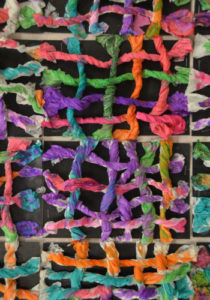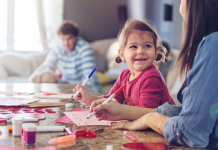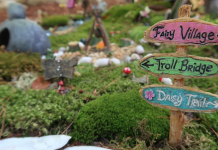Artistic expression is one of the most valuable tools we can teach our children. Curious to know more, I turned to the most kid-savvy and creative art enthusiast I know: my own mother. Mom, or “Mrs. Mac” as she is known to her elementary school students, has been teaching art and early education for over 20 years. After picking her brain for a few hours, I felt eager to whip out the art supplies and get cracking with my own kiddos. So here is her take on how to unleash your child’s inner artist:
What’s the first thing kids should know about art?
Mrs. Mac says: “it’s okay to make mistakes!” In fact, in her classroom, she encourages it. She firmly believes that an “oops” can turn into anyone’s artistic masterpiece. When it comes to kids and art, Mrs. Mac works to instill a sense of adventure with error, and shares that if parents can do the same, their child will be more willing to take creative risks.
What’s the second thing kids should know?
Again, quick to answer, she shared: “The process of creativity is paramount to the finished project.” Mrs. Mac finds that so much good can come from focusing on the child’s process of getting to the finished product rather than the final piece of work itself. We (adults) should resist the urge to draw a line, make a shape, or finish a project for kids. Instead, parents should try to encourage the child to try it themselves, even if they become a little frustrated.
Using reassuring phrases like “yours might look different than mine” teaches cognitive flexibility and validates their individual expression. “Teach them the basics but try not to micromanage” she suggests; “let them explore and guide them to play on their own”. After all, “as Al Hirschfeld says”, Mrs. Mac reminds with a smile, “artists are children who just refuse to put down their crayons”!
…Speaking of masterpieces, how can parents talk to their kids about their artwork?
Ask your kids to tell them about the piece of art, she says. Prompt your child with open questions, like “tell me all about your artwork”, or “I’d love to know more about this part here” and point.

This kind of conversation prompts the child to share about his or her creative process, while building artistic self-efficacy. Additionally, your willingness to listen to their explanations emphasizes the importance of their work and gives merit to their point-of-view.
How can parents nurture the creative spirit?
“By not telling them how to draw!” Let the child explore the materials, and provide them with an array of materials to create. Anything can be artful material (toilet paper rolls, egg cartons, etc.). Mrs. Mac shared about one artistic risk that turned into one of her favorite lesson for little artists. She helped her students adhere twisted paper towels to the edge of construction paper and showed them how to weave. Once the woven twists were done, she distributed watercolor paints and let them splash. At the end of the day, she looked around and noticed as some of her most reserved students were beaming with pride in what they had created.
What are some great mediums or unique art tools for younger artists?
“Crayons are very underrated,” she notes. When it comes to art, kids don’t need the best or the brightest. Technology, no matter the app, is unnecessary, and even detrimental. Oil pastels with watercolors are amazing for kids. “Encourage kids to play with scissors and paper,” she urges. “Clay or modeling dough is an easy option for unleashing fabulous art”.
How can a parent support a child who shows artistic flair?
“…By constantly providing an array of materials, letting them go, and creating alongside them”. Mrs. Mac advises parents to give them a space, a time, and supplies. But she also encourages parents to engage artistically too. What’s more, she offers, “they are never too young to go to an art museum”.
…Speaking of art museums, any tips?
Go on children’s days, check out New Hampshire’s Currier Art Museum, and try out family/kids events. Depending on the child’s age and interest, follow their lead and engage with them through the museum.
What are some of your favorite art projects to do with kids?
“I love opting for artist-inspired activity” (like these Kandinsky or Paul Klee projects). She recommends connecting the child’s favorite story or artist, with an art activity for increased inspiration. Whatever you do, just let them get deliciously messy, have fun, and jump into the creative adventure with them!
5 art blogs for parents and kids:
Babble Dabble Do
The Artful Parent
Art Bar: Raising Creative Thinkers
Deep Space Sparkle
Cassie Stephens











Wonderful post. Thank you. There was years ago a book at Portsmouth Library’s childrens’ room that showed different pictures of cats that were in museums. Chagall’s cat ? Picasso’s cat ? can’t remember the title but my girls loved the different interpretations of the one subject.
Comments are closed.